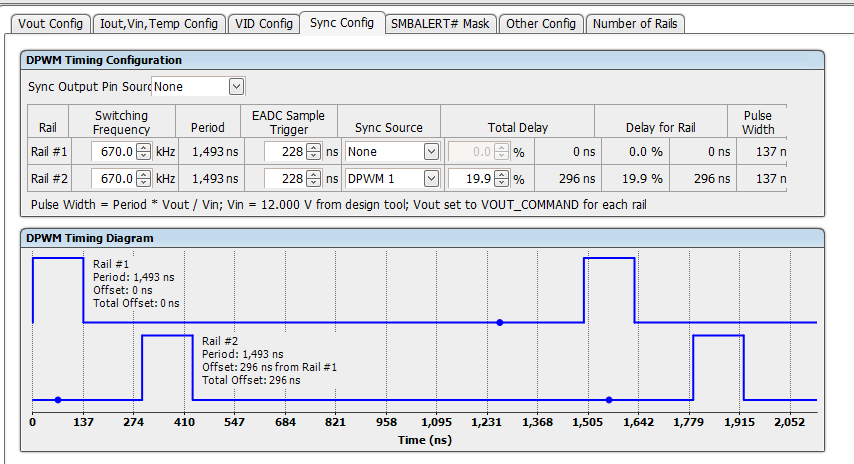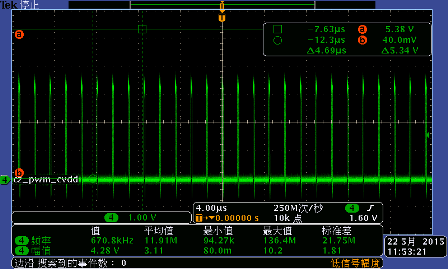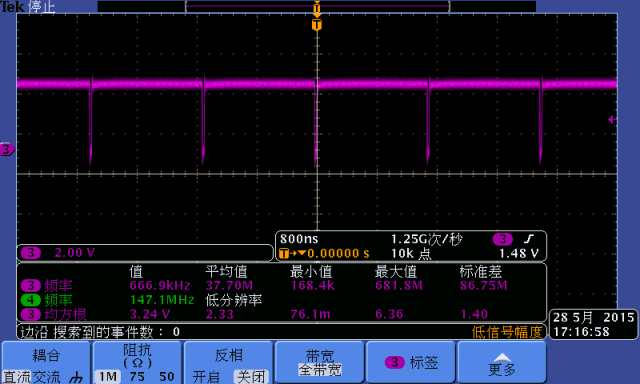Hi all;
I am working on the UCD9222 device with two UCD7242 to output two voltage rails(Cvdd and 1v0). Generally speaking, it work ok except the pwm freq is not the same as the one set in the configure file(xml file).
In the xml file, two rails set pwm freq for 670Khz.
but measure from the oscilloscope, it is only about 593khz.
Question: why the pwm freq is not the same as the one set in the configure file? About factor will impact this case?
Attached the schematic and xml file.cs_xml_file.rar






